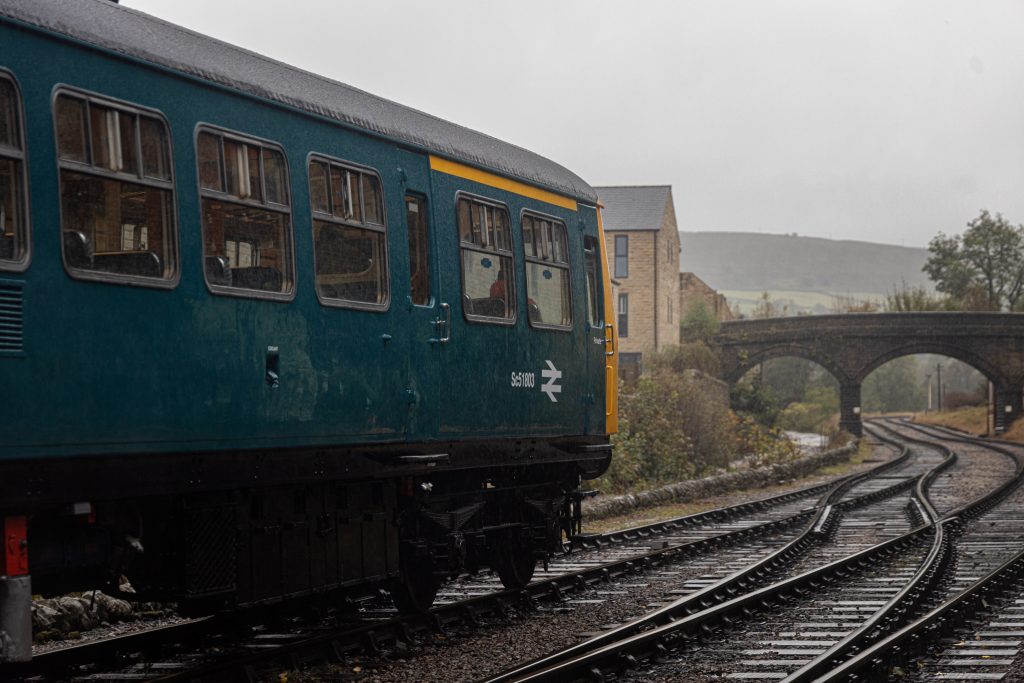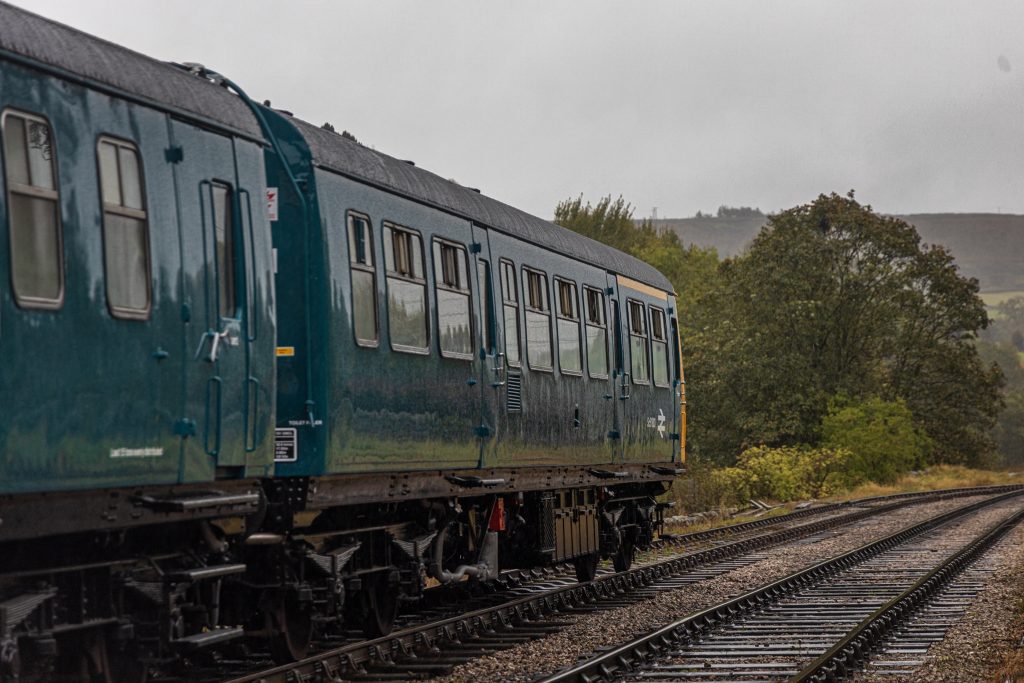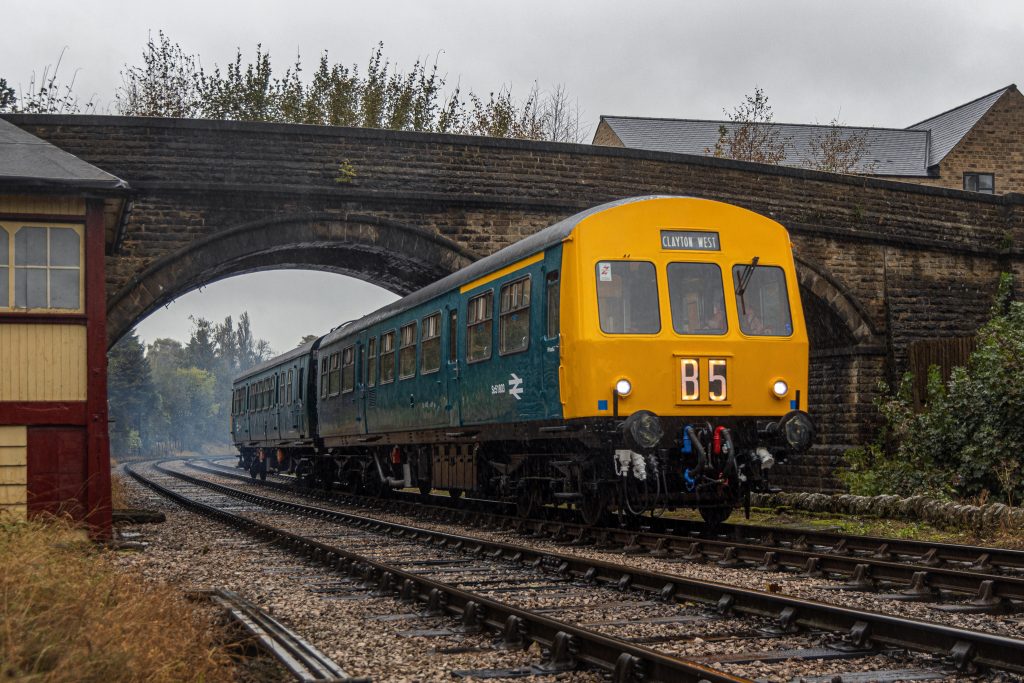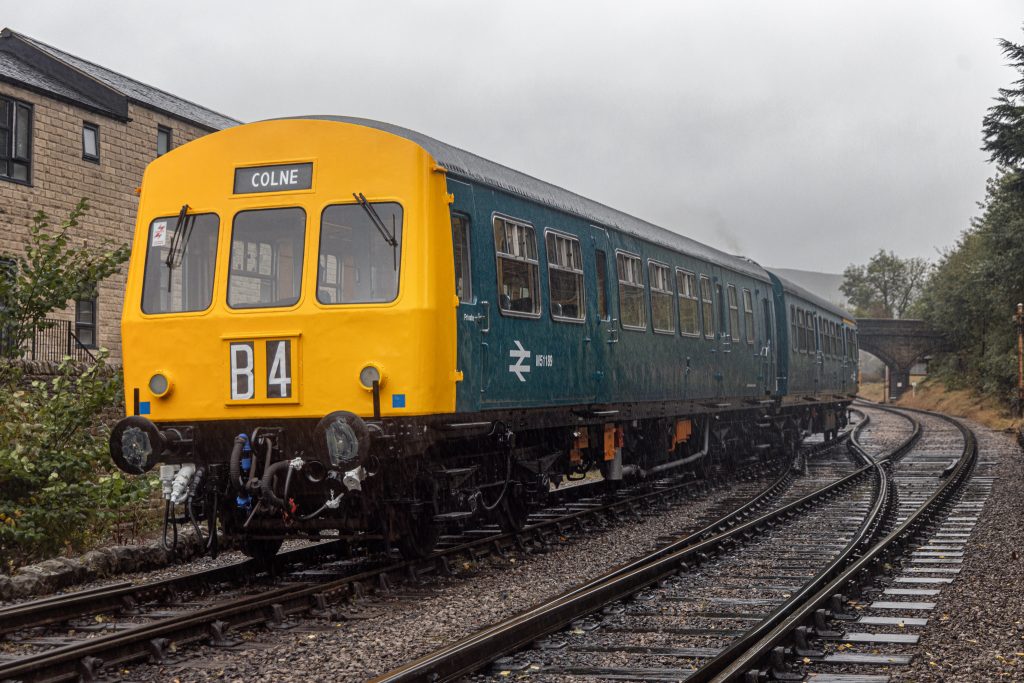The second longest-lived class of First Generation multiple units
First introduced in 1956, the last of the Class 101 multiple units was not withdrawn until 2003, 47 years after its introduction. Found almost everywhere, the use of the class was notably concentrated on services in the east of Scotland, West Midlands, North East and West Yorkshire.
These DMUs could be found in two, three and four coach sets and a small number of buffet cars were built for longer-distance services.
One of the most successful First Generation of diesel multiple units
When introduced, these Metro-Cammell were divided into two classes, 101 and 102, dependent on whether they were fitted with a Leyland or AEC engine. As time went on, they were all classified as 101 as the two classes were interchanged, making a hybrid unit.
Data File
Built: Introduced from 1956
Engine: M51189 AEC 52, Sc51803 Leyland 680/17
Transmission: Mechanical
Max speed: 70 mph
One of the most successful
The British Railways Class 101 two-car (and 102, three-car) diesel multiple units (DMUs) were designed around the Mk.1 coach body and were built by Metro-Cammell at Washwood Heath in Birmingham, England between 1956 to 1959, following the introduction of a series of DMU prototype units. The Class 101 proved to be one of the most successful and longest-lived of First Generation DMUs, the last of the class being withdrawn in 2003.
The class was primarily designed for use on both branch lines and some shorter inter-city routes. It could operate at most locations around the country, being allocated to all but the Southern Region. The units were also geared initially to allow them to haul a goods wagon.
The prefix letters denote British Railways regions, ‘Sc’ for Scotland and ‘M’ for Midland Region.
M51189
Classified when new 101, vehicle No. M51189 was introduced being allocated to Ryecroft depot in Walsall for local services out of Birmingham New Street.
Sc51803
Having an AEC engine, vehicle no. Sc51803 was designated as Class 102 and initially was based at Leith Central working services between Edinburgh and Dundee, Stirling and Dunblane.
A pair made in Haworth
Arriving in a fairly rundown state, the two vehicles which are paired together here on the Worth Valley Railway never ran together during their career for British Rail. From the rundown state that they arrived in, the Class 101 has been restored to a high standard and, on withdrawal of the Class 108, which was the first DMU to run on the KWVR, has taken over the DMU early morning turns when a 2 coach train is needed.
In early 2023, the two vehicles were taken into the new shed at Haworth for 7 months of maintenance and overhaul. During its time in the works, a significant amount of body repairs have been completed with the majority of windows having been removed to access the corroded bodywork. As a change to the livery previously carried, the unit has been out-shopped in British Railways all over Blue with full yellow ends, a livery first introduced in 1967 and could be found on Class 101’s into the 1980s. The work has also seen the installation of newly fabricated route indicators on each cab front as per original drawings to reflect the era the unit now portrays. Other works carried out during its time in the shed have included replacing sections of the exhausts, installation of new silencers and a change-out of final drive seals in M51189.






